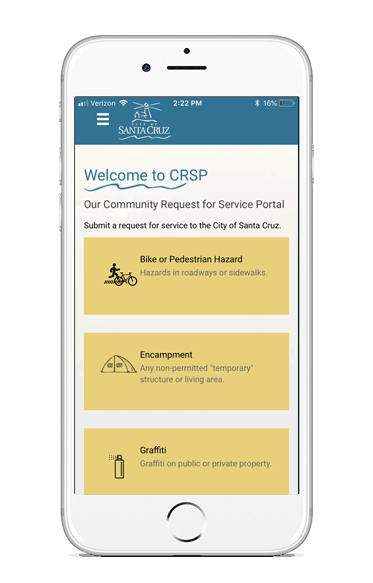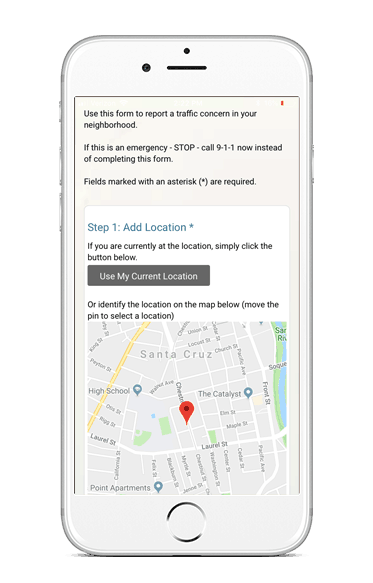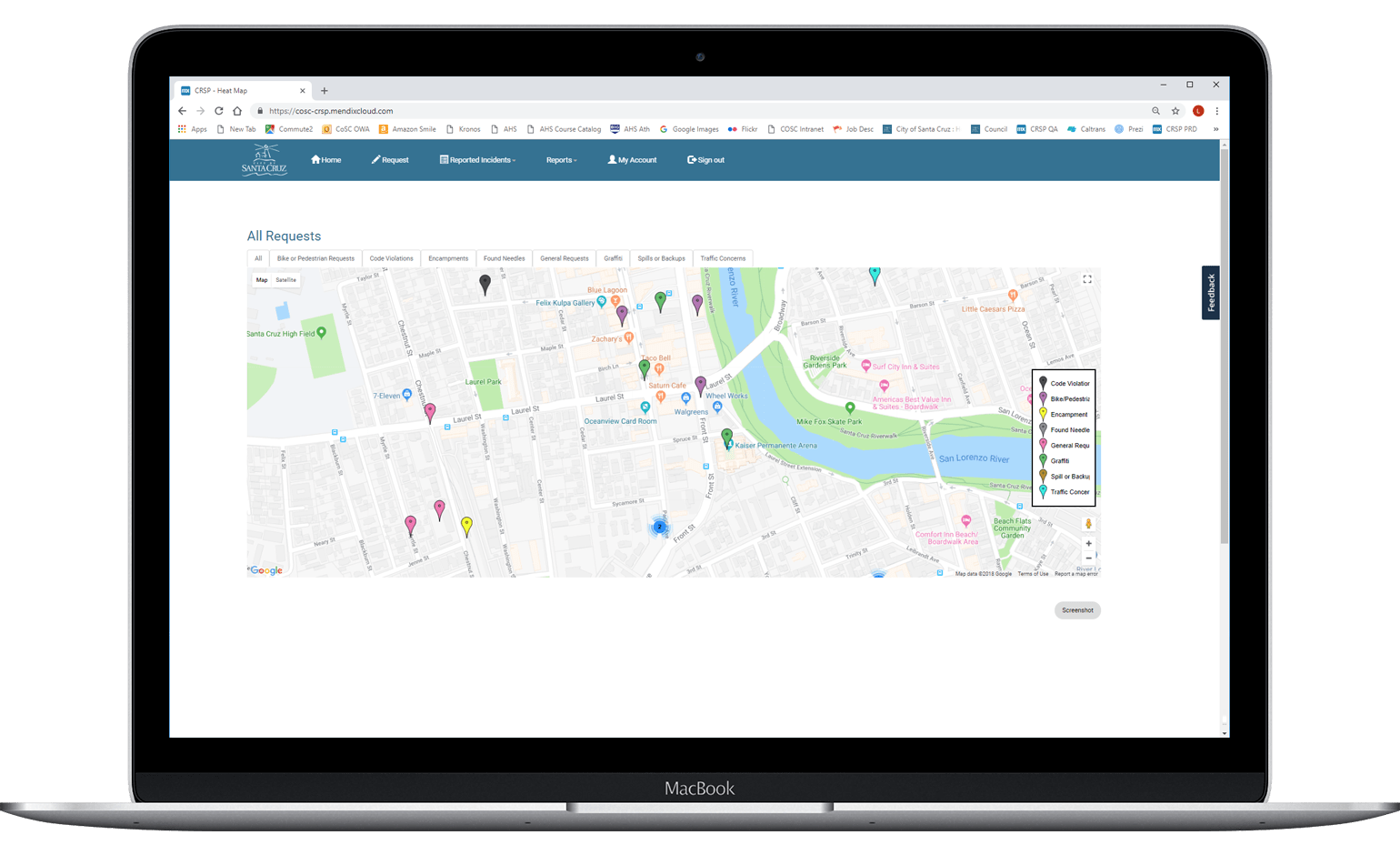
The City of Santa Cruz Centralizes Citizen Requests

The city of Santa Cruz sits on the coastline of central California, is home to roughly 65,000 residents, and is a burgeoning tourist destination thanks in part to its sun-soaked vistas and exceptional surfing. To both the community members and Santa Cruz city officials, community engagement is a top priority. In fact, over the past few years, the city council has made it a strategic priority to continue to foster an engaged and informed community. The officials understand that technology is the main driver for persistent and progressive community engagement.
When charged with ensuring the city’s technology stayed in lock-step with the growing needs of the residents, Laura Schmidt, IT Director for the City of Santa Cruz, looked to low-code as the answer to better serving the community.
Looking for a better way to serve
There were many initiatives within the city’s IT strategic plan – some focused to better drive community engagement — and there was a lot of work to be done. The City of Santa Cruz IT team consists of only 20 people supporting an entire city. They have a small applications team of four to support over 80 applications, but they needed ways to quickly develop apps that the community members and the city needed to stay connected. Investing in multiple commercial off-the-shelf systems would prove too costly over time. In terms of efficiencies, managing applications developed across disparate systems was also untenable.
Schmidt sought out one solution on which her team and the city’s departments could establish a foundation for all future City of Santa Cruz technologies: “We needed something that is flexible, adaptable, has a rapid time-to-use turnaround and is highly productive and cost sustainable.”
The crest of technology
Schmidt realized that low-code development was the answer to her problems. Low-code platforms use a model-driven approach to development and support Agile development, giving users like the City of Santa Cruz IT team the ability to quickly create rich applications without having to code. Mendix was their platform of choice when it came to low-code development. “We’re a small IT team,” Schmidt explains, “so we want to use the latest technology to make sure our work has a positive impact on the community we serve. The beauty of low-code is that it gives us control and flexibility.”
The IT team and fellow city departments easily identified a priority project they wanted to build using low-code development. As with any local government, there are plans in place to address potential hazards, concerns, and violations. In the past, if Santa Cruz residents needed to report a traffic concern, vandalism, or another request for service, the request form was difficult to find in the city’s maze of departmental web pages. The mechanisms by which a resident requested a service were also disparate. Some requests were submitted through Adobe Forms, others handled by a content management system. In some cases, residents were directed to a phone number.
Laura Schmidt on building technology for the community: We’re saying, ‘Yes, we hear you.’
Schmidt and her team could have put links to the different services on one web page and called it a day. However, their drive was to create a modern platform that sat on top of technology that can grow with the city. Also, having 15 different mechanisms for requesting services wasn’t an option if they wanted to execute the city’s strategy to further foster community engagement.
Keeping community first, always
With Mendix, IT and city departments built a centralized location for service request, and a bridge between the city and community members. In just three weeks, the team members, with the help of Mendix partner EPI-USE, created a Community Request for Service Portal, a web and mobile application through which community members can request services and file reports like bike hazards, graffiti reporting, and traffic concerns.

While community engagement was the key priority, operational efficiencies were also something they aimed to increase. To build the app, the team worked across different City of Santa Cruz departments, gathering as much information as they could from city workers that manage request processes all day.

The team was able to streamline the request process and enhance it. With each request in the portal, users can upload photos and add geolocation information. The thinking behind the portal’s design was a no-brainer, according to Schmidt: “We felt that we had to be responsible and responsive to our community members, and offer up something in this portal that had that.”
Building for the future
The new portal also allows the City of Santa Cruz to stay informed about its community and streets. They’re able to measure aspects of the city through data, and make proper, data-informed decisions about how they operate their city. Schmidt sees the real benefit as being able to identify trends and patterns in the data, and then address them at a more systemic level.

The Community Request for Service Portal is still in Phase 1. But Schmidt is already planning to build out and add future service request types. As for those other IT initiatives, they’ll use the Mendix Platform as the underpinning of all their future development projects. With Mendix, Schmidt and her team can better control enhancements, easily make customizations, and make data-informed decisions. Schmidt says the value of using low-code development is two-fold: The City of Santa Cruz can now “create something that’s good for the community, and integrate that to our processes and other systems and make us more efficient.”
The Community Request for Service Portal, to Schmidt, is more than an IT project. To her, it’s representative of many things. It’s a way of greatly improving her team’s technology service offerings, it’s a means to connecting the different departments across the City of Santa Cruz, and it’s a way of bridging the local government to the community members of Santa Cruz. “The team really came together, looking at and putting the community first and seeing what was best for the community.”
